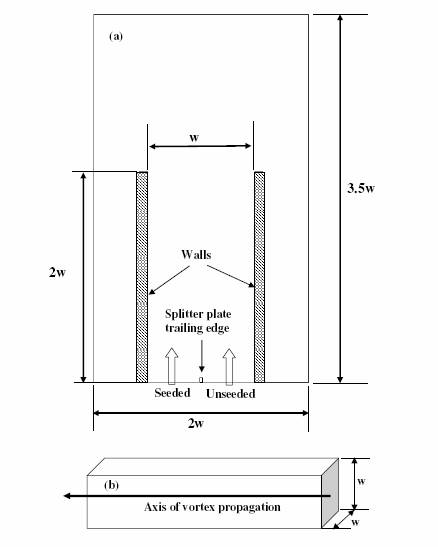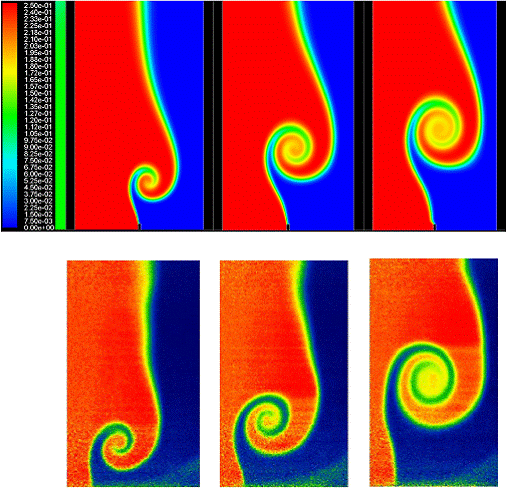Sponsor: UConn Research Foundation
Graduate Students: S. Chaudhuri
Project Summary
Fundamental studies of vortical interactions in mixing flows and combustion are important for understanding effects of large scales of turbulent flows. One class of such studies involves interaction of vortical structures with diffusion layers and flames. In one such study of non-reacting scalar mixing, a laminar line vortex is spun between two air streams (one seeded with acetone and the other unseeded) flowing parallel to each other in a rectangular flow channel. An isolated line vortex is initiated by momentarily increasing one of the stream velocities in relation to the other in an otherwise equal velocity, co-flowing streams separated upstream by a splitter plate. Experiments involved planar laser-induced acetone fluorescence imaging of the vortex interaction region. Experimental results were analyzed to determine various mixing measures in the field of the vortex for different vortex strengths (or circulations) and time of interaction.
A complementary computational study was carried out to simulate the experiments and validate the computations. Once validated, the computational tool was utilized to explore a wider range of vortex interaction parameters and the influence of non-isothermal mixing.
A third study involved the interaction of a planar diffusion flame with a line vortex. A planar diffusion flame was established between two co-flowing, equal velocity streams of acetylene diluted with nitrogen and air. The flame–vortex interactions were diagnosed by planar laser-induced incandescence for soot yield and by particle image velocimetry for vortex flow characterization. The results showed that soot formation and distribution are influenced by the reactant streams from which vortices are initiated. The vortices interacting with the flame from the air side produce more soot and soot is distributed in and around the vortex core in diffuse layers. In contrast, topography of soot in vortices interacting from the fuel side is such that soot is confined to thinner layers around the vortex core which does not contain any soot. The flame curvature is found to influence the local soot production with the flame regions convex to the fuel side containing more soot locally.




Publications
Cetegen, B. M., “Scalar Mixing in the Field of a Gaseous Laminar Line Vortex” Experiments in Fluids, Vol. 40, pp. 967-976, 2006
Basu, S., Barber, T and Cetegen, B. M. “Modeling and experimentation on scalar mixing in a non-reacting diffusion layer wrapped in a line vortex”, Physics of Fluids, Vol 19, pp. 053601-053614 (2007)
Cetegen, B. M. and Basu, S. “Soot topography in a planar diffusion flame wrapped by a line vortex” Combustion and Flame, Vol. 146, No. 4, pp. 687-697, 2006